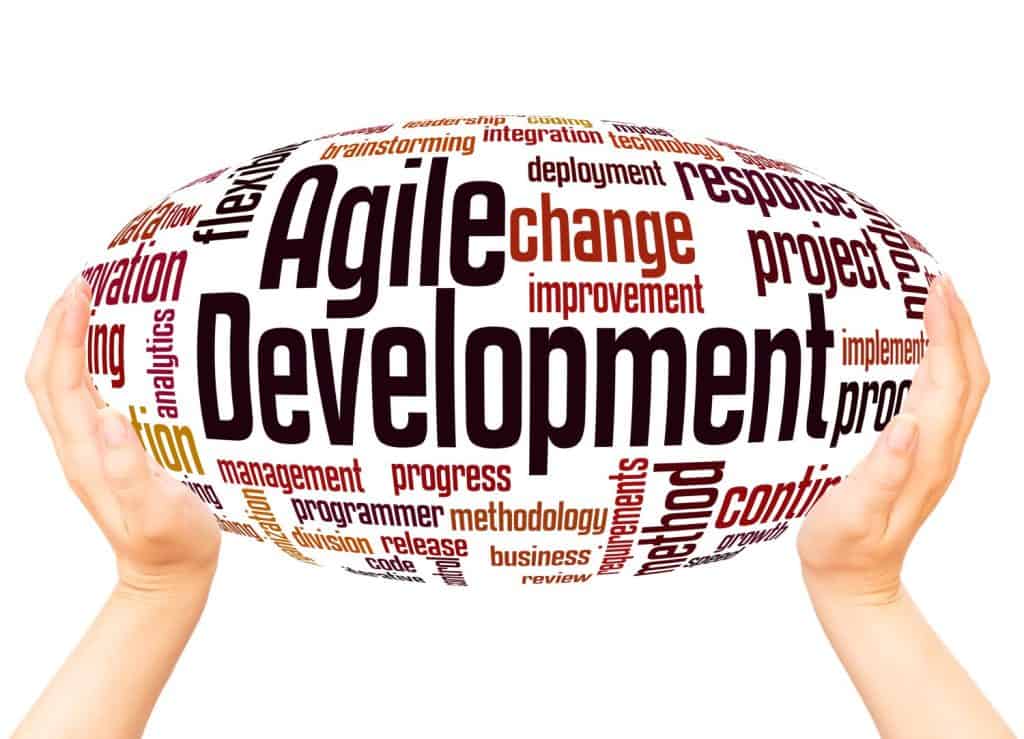
© Ground Picture/Shutterstock.com
Key Points
- Stakeholders in Agile play an important role like any other project management approach.
- The key to success in Agile is through a foundation of trust and communication.
- Effectively managing how you communicate with your stakeholders is going to make your odds of completing a project increase substantially.
Where do stakeholders in Agile come into play? Any project management methodology is going to have a stakeholder of some sort at its core. However, learning the roles and overall function of these individuals in the grander scheme of your Agile project can make quite a bit of difference when moving through sprints and achieving milestones.
That said, there are quite a few types of stakeholders in place when looking at any Agile project. Agile doesn’t necessarily operate the same as more ubiquitous methodologies like Lean Six Sigma. With that in mind, we’re going to explore the different roles and key functions of stakeholders within Agile throughout today’s guide.
What Is Agile?

©Pedal to the Stock/Shutterstock.com
Agile is a project management methodology that seeks to put people before processes. To this end, it focuses more on the cohesion of the team and high degrees of adaptability over more rigid processes. Compared to the likes of something like Waterfall project management, Agile can come across as unfocused and meandering.
However, the proof is in the pudding. Upon the introduction of Agile as a project management methodology for software developers, it has become the de facto standard. The ability to adapt and iterate upon processes makes it an excellent fit for businesses looking to meet customer demands as they change and evolve.
This people-centric approach is fully detailed in the Agile manifesto, and it is something that is making its way into businesses that don’t revolve entirely around the tech industry. There is certainly something to be said about an approach that values transparency and flexibility over more rigid planning.
Does Agile Adhere to Typical Project Management Structures?
Agile doesn’t necessarily adhere to the typical hallmarks of the project management approaches we’ve detailed more in-depth at iSixSigma. It doesn’t have the same sort of structure that you’ll see in the likes of a DMAIC project, nor does it stick to a game plan like Waterfall project management. As such, it can be more difficult to ascertain the role of stakeholders in Agile.
However, with a little practice and a closer eye on those with a stake in your project, it is quickly identified. Agile doesn’t focus so much on key performance indicators, although those are certainly present.
To those unaccustomed to an Agile project, it can seem like utter chaos at first glance. However, there is a method behind the madness. It took some time for me to get to grips with the methodology upon my time entering the tech industry. However, I maintain it is one of the most powerful project management approaches that you’ll find in use.
The Role of Stakeholders in Agile

©Tint Media/Shutterstock.com
So, what exactly is the role of stakeholders in Agile? Like the teams that operate within Agile, stakeholders are found at quite a few different strata. Knowing the role of these stakeholders within your Agile project is going to go a long way in making sure you’re fulfilling your goals and meeting customer needs.
As such, let’s break down some of the roles and expectations of stakeholders in Agile. As with any other project management approach, you can see a few different people in these roles. They are as follows:
Internal Stakeholders
- Project Managers
- Production Team
- Investors
- Sales and Marketing teams
- Vendors and Suppliers
External Stakeholders
- Competitors
- Consumers
- Regulatory Bodies and Government Officials
As you can probably surmise there is quite a bit that goes on with stakeholders in Agile. However, we’re going to take a look at some of the most vital roles within Agile for stakeholders to hold. These are crucial people in any project, and as such, it helps to know exactly what they’re doing throughout a project.
Project Managers
Without project managers, Agile projects simply don’t get off the ground. Agile project managers are an important component of any effort made within the methodology. At the end of the day, these stakeholders in Agile are the ones guiding the entire process.
Typical responsibilities of the project manager in Agile are planning, organizing, and finally controlling the tasks for the team members responsible for the deliverable. Further, they act as an important point of contact between the production team and other vital stakeholders in Agile, which we’ll touch on a little more.
Product Owners
A product owner is the end client or user for your deliverable and plays a key role in the development of your project. Ostensibly, this stakeholder in Agile is communicating directly with the project manager to guarantee the parameters and particulars of the project meet their final approval. When working alongside the project manager, they help to develop the roadmap and constraints for the current project.
Product owners are instrumental in establishing what aspects of the project to tackle first, along with providing the reason behind the work itself. They aren’t directly customers, but they help to coordinate customer needs and wants in the final deliverable so things go off without a hitch.
Project Sponsors
Sponsors play the same sort of role as anyone providing capital and resources to accomplish a project. There isn’t much to say about the role of these stakeholders in Agile, but they are certainly a key part of any project. Project sponsors are less concerned with the particulars of how the project gets accomplished, focusing more on the result.
Development or Production Team
Depending on your organization’s take on Agile, the team working on the project can end up as one of the primary shareholders. This is more common in the deck industry, especially with Scrum teams. However, for this example of stakeholders in Agile, you’re looking at perhaps the most responsibility out of any particular stakeholders.
Teams are expected to do the work in an efficient and timely manner that coincides with the scheduling set either by the Scrum Master or the project manager. Additionally, they will be expected to iterate on concepts if prototypes aren’t to the liking of the end user.
End Users
The final type of stakeholders in Agile are probably the most vital for the success of any project. Any business is going to deal directly with customers, and your end users have quite a bit riding on the success of any deliverable you’re creating.
The responsibilities for this role are mostly down to feedback and providing project scope.
Managing Stakeholders in Agile

©Ground Picture/Shutterstock.com
Now that we’ve defined the primary stakeholders in Agile, it’s time to discuss how you best manage these groups. Agile lives and dies by a few different principles, all of which are aligned with the interests of the customer, the project manager, and the team to name a few.
However, managing these groups can seem somewhat daunting, which is to be expected. You’ve got quite a few interlocking parts operating in concert with each other. As such, there are some definite low-tech strategies you can utilize to make the most of your Agile project.
In most cases, this lines up with the objectives and criteria of the Agile manifesto, which emphasizes people above all else. While your company is creating value in the form of deliverables for the customer, that doesn’t tell the whole story of how to manage stakeholders in Agile.
Transparent and Open Communication
One of the biggest components for success in your Agile project is going to be communication. The way we communicate with our teams, managers, and other stakeholders in Agile is what boils down to the success of any initiative. If you want your project to succeed, then be open with all stakeholders involved.
This means communicating the progress of the project, any shortcomings, and so forth. Feedback is valuable at all stages of an Agile project, and making sure you’re hitting milestones as necessary is going to foster a relationship of trust with your customer.
Collaboration
Agile supposes that no single person is an island as the old saying goes. Teams are expected to be cross-functional, drawing from a wealth of previous experience and expertise. As such, it only makes sense that teams collaborate to accomplish the goals outlined in Agile sprints.
Further, this is an open invitation to collaborate with your customers as well. If testing feedback isn’t showing the desired results, it might be time to invite the customer to make more suggestions on how to accomplish their needs.
Tailor Results to Stakeholder Preferences
Your management results are going to come down to how you decide to approach communicating between teams. Not every stakeholder in Agile is going to need a daily brief on how things are going. However, by selecting the right approach, like monthly reports for project sponsors as an example, you’re setting yourself up to make the stakeholders and your team happy with the work being done.
Other Useful Tools and Concepts
Looking for some other helpful tips and tricks? You might want to take a closer look at the best strategies for overcoming resistance to the adoption of Agile in your organization. Change is a tricky thing to navigate, but it doesn’t need to be that way.
Additionally, you might want to consider looking at the differences between Agile and Waterfall. Both of these are popular approaches to project management, but their implementation is quite different in terms of overall functionality.
Conclusion
The role of stakeholders in Agile is much the same as in many other project management approaches. However, the way you choose to manage and address stakeholders is what is going to be instrumental for the overall success of your projects.
The image featured at the top of this post is ©Ground Picture/Shutterstock.com.